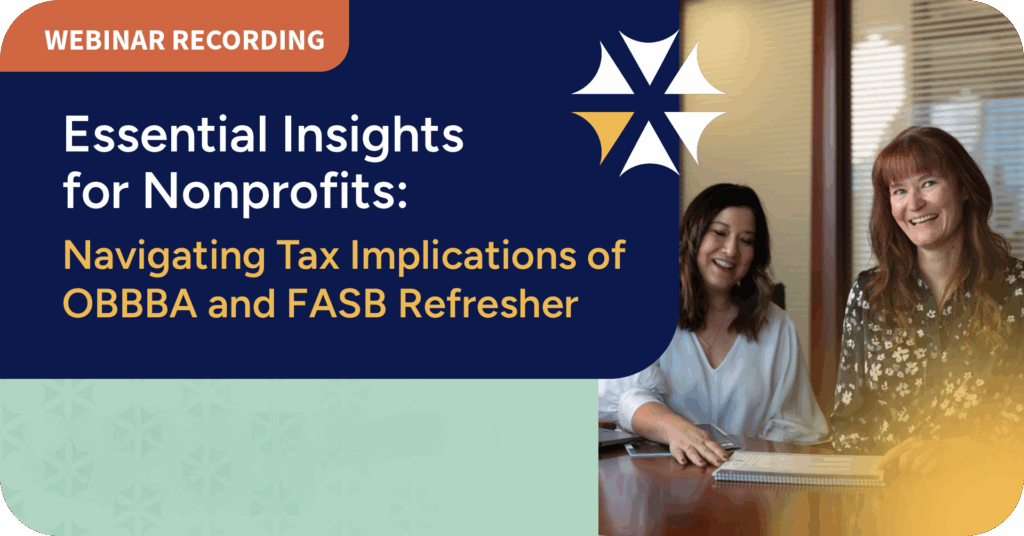
Maxwell Locke & Ritter has outlined a few 2024 year-end tax planning ideas for investors and individuals with estate and gift planning needs.
Capital Gains and Losses
Investors frequently “time” sales of assets like securities at year-end to produce optimal tax results, so it’s important to understand the basic tax rules.
For starters, capital gains and losses offset each other. If you show an excess loss for the year, it offsets up to $3,000 of ordinary income before being carried over to the next year. Long-term capital gains from sales of securities owned longer than one year are taxed at a maximum rate of 15% or 20% for certain high-income investors. Conversely, short-term capital gains are taxed at ordinary income rates reaching as high as 37% in 2024.
YEAR-END MOVE: Review your portfolio. Depending on your situation, you may want to harvest capital losses to offset gains, especially high-taxed short-term gains, or realize capital gains that will be partially or wholly absorbed by losses.
However, watch out for the “wash sale rule.” If you sell securities at a loss and reacquire substantially identical securities within 30 days of the sale, the tax loss is disallowed. A simple way to avoid this adverse result is to wait at least 31 days to reacquire substantially identical securities.
NOTE: A disallowed loss increases your basis for the securities you acquire and could reduce taxable gain on a future sale.
Be aware of even more favorable tax treatment for certain long-term capital gains. Notably, a 0% rate applies to taxpayers below certain income levels ($47,025 for singles and $94,050 for joint filers in 2024). Furthermore, some taxpayers who ultimately pay ordinary income tax at higher rates due to their investments may qualify for the 0% tax rate on a portion of their long-term capital gains.
Tip: The preferential tax rates for long-term capital gains also apply to qualified dividends received in 2024. These are most dividends paid by U.S. companies or qualified foreign companies.
Net Investment Income Tax
When you review your portfolio (see above), do not forget to account for the 3.8% “net investment income tax” (NIIT). The NIIT applies to the lesser of “net investment income” (NII) or the amount by which MAGI for the year exceeds $200,000 for single filers or $250,000 for joint filers. (These thresholds are not indexed for inflation.) The definition of NII includes interest, dividends, capital gains, royalties, and income from passive activities, but not Social Security benefits, tax-exempt interest and distributions from qualified retirement plans and IRAs.
YEAR-END MOVE: Have an estimate made of your potential liability for 2024. Depending on the results, you may be able to reduce the tax on NII or avoid it altogether.
For example, you may invest in municipal bonds (“munis”). The interest income generated by munis does not count as NII, nor is it included in the MAGI calculation. Similarly, if you turn a passive activity into an active business, the resulting income may be exempt from the NII tax.
Tip: When you add the NII tax to your regular tax, you could be paying an effective 40.8% tax rate at the federal level alone. Factor this into your investment decisions.
Required Minimum Distributions
For starters, you must begin “required minimum distributions” (RMDs) from qualified retirement plans and IRAs after reaching a specified age (age 73, beginning in 2023, and scheduled to increase to 75 in 2033). The amount of the RMD is based on IRS life expectancy tables and your account balance at the end of last year. Taxpayers who are in their first RMD year have until April 1 of next year to make that first RMD.
YEAR-END MOVE: Assess your obligations. If you can postpone RMDs still longer, you can continue to benefit from tax-deferred growth. Otherwise, make arrangements to receive RMDs before January 1, 2025 to avoid any penalties.
Conversely, if you are still working and do not own 5% or more of a business with a qualified plan, you can postpone RMDs from that plan until your retirement. This “still working exception” does not apply to RMDs from IRAs or qualified plans of other employers.
If subject to RMDs, consider making a qualified charitable distribution (QCD), as discussed further below.
Tip: Under the initial SECURE Act, you are generally required to take RMDs from recently inherited accounts over a ten-year period (although previous inheritances are exempted). These rules are complex, so consult with your tax advisor regarding your situation and see bullet point below for penalty relief for 2021 through 2024.
Section 1031 Exchanges
Beginning in 2018, the TCJA generally eliminated the tax deferral break for Section 1031 exchanges of like-kind properties. However, it preserved this tax-saving technique for swaps involving investment or business real estate. Therefore, you can still exchange qualified real estate properties in 2024 without paying current tax, except to the extent you receive “boot” (e.g., cash or a reduction in mortgage liability).
YEAR-END MOVE: Make sure you meet the following timing requirements to qualify for a tax-deferred Section 1031 exchange.
- Identify or actually receive the replacement property within 45 days of transferring legal ownership of the relinquished property.
- Have the title to the replacement property transferred to you within the earlier of 180 days or your 2024 tax return due date, plus extensions.
Tip: Note that the definition of “like-kind” is relatively liberal. For example, you can exchange an apartment building for a warehouse or even raw land. Consult your tax advisor, however, if there is any question as to whether a transaction may qualify as a Section 1031 exchange since the rules are complex.
Miscellaneous
- Contribute up to $23,000 to a 401(k) in 2024 ($30,500 if you are age 50 or older). If you clear the 2024 Social Security wage base of $168,600 and promptly allocate the payroll tax savings to a 401(k), you can increase your deferral without any further reduction in your take-home pay. Note: SECURE 2.0 further enhances catch-up contributions for older employees after 2024.
- Also consider contributing to traditional IRAs ($7,000 annual limit, $8,000 if age 50 or older), or HSAs ($4,150 for self-only coverage and $8,300 for family coverage; those 55 or older can contribute an additional $1,000) if eligible to do so.
- Weigh the benefits of a Roth IRA conversion, especially if this will be a low-tax year. Although the conversion is subject to current tax, you generally can receive tax-free distributions in retirement, unlike taxable distributions from a traditional IRA.
- Skip this year’s RMD if you recently inherited an IRA and are required to empty out the account within ten years. Under new IRS guidance, there is no penalty if you fail to take RMDs for these inherited IRAs in 2021-2024. On the flip side, final regulations were issued in July that begin to require annual RMDs for these inherited IRAs in 2025 in addition to the requirement that the inherited IRA account be totally distributed by December 31st of the tenth calendar year following the IRA owner’s death.
- Consider a qualified charitable distribution (QCD).
- Sell real estate on an installment basis. For payments over two years or more, you can defer tax on a portion of the sales price. Also, this may effectively reduce your overall tax liability. Be aware, though, that interest is owed to IRS on the deferred tax to the extent that you have outstanding installment sale receivables in excess of $5 million, which could significantly reduce the benefits otherwise achieved by using the installment method. Also, consider the potential for increased capital gains rates in future years when these installment payments are received. NOTE: When it makes sense, you may “elect out” of installment sale treatment on your 2024 return. Otherwise, the tax treatment is automatic if one or more payment is scheduled to be received after year end.
- If you rent out your vacation home, keep your personal use within the tax law boundaries. No loss is allowed if personal use exceeds the greater of 14 days or 10% of the rental period.
- Income derived from cryptocurrency and other digital asset transactions is subject to tax, and Page 1 of Form 1040 asks if you received (as an award or payment for property or services), sold, exchanged, or otherwise disposed of a digital asset. While buying cryptocurrency alone isn’t a taxable event, the sale of a cryptocurrency is, and you should keep track of all cryptocurrency transactions and consult your tax advisor regarding potential income tax implications of these transactions each year. NOTE: Rev Proc 2024-28 provides a safe harbor for taxpayers previously using the universal (or global) method for determining cost basis to switch to a wallet-by-wallet (or account-by-account) method if done so prior to 1/1/2025 via an approved method.
Estate and Gift Taxes
The TCJA effectively doubled the estate and gift tax basic exclusion from $5.49 million in 2017 to $11.18 million in 2018 and adjusted each subsequent year for inflation. For example, the exclusion for 2024 is $13.61 million, and the IRS recently announced the 2025 amount will be $13.99 million, an increase of $380,000. As with other TCJA provisions, this is scheduled to sunset at the end of 2025 which will cut the exclusion amount roughly in half beginning in 2026 if not extended or made permanent by the new congress and presidential administration.
YEAR-END MOVE: Incorporate this into your overall estate plan. For instance, your plan may involve various techniques, including bypass trusts, that maximize the benefits of the estate and gift tax exemption. Also, the higher interest rate environment may make certain estate planning strategies more attractive than before, including charitable remainder trusts and personal residence trusts.
In addition, you can give gifts to family members that qualify for the annual gift tax exclusion. For 2024, there is no gift tax liability on gifts of up to $18,000 per recipient. You do not even have to file a gift tax return. Moreover, the limit is doubled to $36,000 for joint gifts by a married couple.
Tip: You may “double up” again by giving gifts in both December and January that qualify for the annual gift tax exclusion for 2024 and 2025, respectively. The IRS recently announced that the limit for 2025 is $19,000 per recipient.
ML&R is here to help
Maxwell Locke & Ritter can help you with any questions you might have regarding year end tax planning for investors and estate and gift planning. Please contact us if you have questions about these updates.




